
The latter part of each year brings a series of seasonal celebrations … as well as the release of “What’s Hot and What’s Not in the Legal Profession,” the annual report produced by Robert Denney Associates, a West Chester, Pa.-based management, leadership, strategic planning, and business development consultancy serving law firms across the country.
This year’s report emerged just weeks after a U.S. presidential election that resulted in a switch of political parties. That’s happened three times previously in the 28 years Denney has published his reports. But the current transition differs vastly from the previous three, he says.
Tell Us!
What changes in your practice area are you anticipating in the coming year? Post a comment below or email us at wislawmag@wisbar.org.
Based on President Donald Trump’s statements during and since his campaign and his cabinet nomination choices as of early 2017, we might expect drastic policy changes in immigration, energy, environmental protection, government regulations, health care, and more.
For lawyers, such changes, if they materialize, will mean “heightened activity and homework required in many practice areas,” Denney says.
The quandary is that “lawyers just don’t know what’s going to happen,” he adds. “How do they prepare for that? How do they advise their clients?”
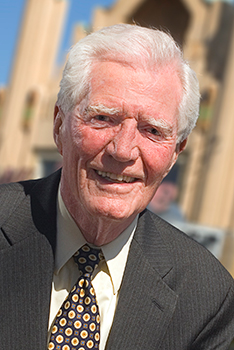
Robert Denney, Robert Denney Associates, West Chester, Pa.: During the Trump administration, we can expect drastic policy changes in immigration, energy, environmental protection, government regulations, health care, and more. Such changes will mean heightened activity and homework required of lawyers in many practice areas.
Such questions are on many attorneys’ minds as they enter the new year. The changeover at the White House is only one factor. The legal profession and the environment surrounding it also continue to change dramatically.
For his report, Denney steps back to gain a wide-angle view of what may lie ahead for lawyers in 2017. He bases his findings on information he and his team gleaned from multiple sources: law firms, other legal service providers, corporate legal departments, surveys, and the legal and general press.
The entire report appears in this issue beginning on page 12. Here we highlight some of the key findings and share thoughts from other observers on what Wisconsin attorneys might expect in the coming year.
Hot Practice Areas
Below are a few practice areas in which Denney foresees high levels of activity in 2017.
Health Care Law
This practice area appears on Denney’s “red hot” list, and Milwaukee attorney Fred Geilfuss of Foley & Lardner LLP seconds that opinion. The first big question, he says, is what will happen with the Affordable Care Act. Will it be repealed entirely or left partially intact? Will it be replaced? Will any such action occur in 2017?
The situation represents “a big wild card,” Geilfuss says. “Depending on what comes, there clearly will be an impact on health law practitioners” as they advise their hospital, clinic, and health insurer clients.
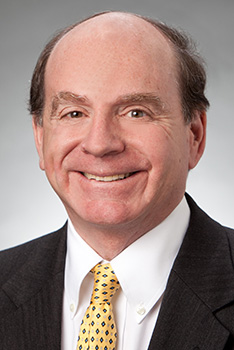
Fred Geilfuss, Foley & Lardner LLP,
Milwaukee: Changes to the Affordable Care
Act and implementation of new Medicare
payment models will impact health law
practitioners as they advise their heavily
regulated hospital, clinic, and health insurer
clients.
Another issue Geilfuss points to is the Medicare Access and CHIP Authorization Act (MACRA), passed in 2015 and soon to be implemented, which changes the way Medicare pays physicians. “Doctors will need to report or risk losing a percentage of their compensation,” Geilfuss explains.
A new payment model also will be implemented this year for hip and knee replacements. Another model for certain cardiac procedures will emerge down the line, possibly followed by additional new payment models, Geilfuss says.
The upshot is that health care entities need a lot of legal guidance. “In a heavily regulated industry, there are always legal challenges facing providers,” Geilfuss says. “Some pretty significant ones are coming this year” in the health care industry.
Immigration Law
For starters, expect President Trump to revoke Deferred Action for Childhood Arrivals (DACA), the executive directive President Obama first issued in 2012 to temporarily protect qualified young immigrants – those often referred to as “dreamers” – from removal (deportation) and enable them to hold jobs.
That means “800,000-plus individuals nationwide who could be placed in removal proceedings,” says Glorily López of Murphy Desmond S.C. in Madison. A bill before Congress could stop that from happening, but Lopez doubts the bill will pass.
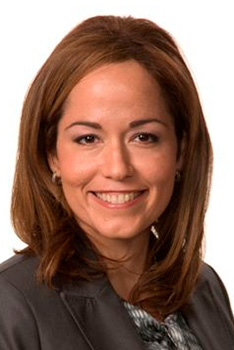
Glorily López, Murphy Desmond S.C., Madison: Under President Trump, executive directives affecting immigrants issued by President Obama likely will be revoked, potentially placing 800,000-plus more individuals in deportation proceedings.
Another Obama executive action known as DAPA (Deferred Action for Parent Accountability) was halted by a court injunction, as was an expanded version of DACA. The case landed before the U.S. Supreme Court this past summer, where it met a 4-4 decision. Further litigation to remove the injunction is doubtful, López says, under the Trump administration’s attorney general.
A provision in an Obama executive action in 2014 also created a set of priorities in removing undocumented aliens, with convicted felons, gang members, and terrorists at the top of the list. That system of priorities may be abolished, and any undocumented person could face removal proceedings.
Trump’s campaign promises included mass removals of undocumented immigrants. López points out that some 500,000 removal cases currently are pending in immigration courts nationwide. “The system is overwhelmed,” she says. “It will be beyond overwhelmed, a complete chaos, if you place 5 million or 10 million more individuals into removal proceedings – unless Congress passes a spending bill to create more immigration courts.”
The above only scratches the surface of what may lie ahead in immigration law, López says. “I have a lot of clients from diverse nationalities who are extremely nervous,” she says, “as are the employers who hired them. My clients are not terrorists or criminals, but in the 2016 election cycle, they felt very much targeted.”
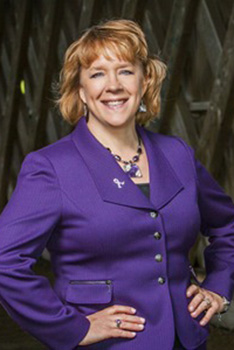
Carol Wessels, Wessels Law Office LLC,
Mequon: People are aware of the need for
advance planning for their elderly years and
are especially willing to talk about and plan
for debilitating conditions, such as Alzheimer’s
disease and other forms of dementia.
Elder Law
Not only is our population aging, but awareness also is growing about the need for advance planning for our elderly years. Driving that awareness is a greater willingness to talk about and plan for debilitating conditions, such as Alzheimer’s disease and other forms of dementia, that can strike in old age, says Carol Wessels of Wessels Law Office LLC in Mequon.
“We see people coming in to look at their powers of attorney and their estate plan,” she says. “They’re concerned about the rising costs of long-term care and need advice on how that will impact them. They want to get out in front of the situation.”
Wessels notes that there’s a common misperception that elder law attorneys spend their time “figuring out how to get millionaires on Medicaid,” she says. But that’s not the case, at least in Wisconsin.
“My clients are middle-income families who have saved a bit of a nest egg, but not a ton of money,” she says. “They need help understanding how the long-term care system works and how they’re going to be able to afford that type of care. I’d like to see more young lawyers realize what an interesting and diverse area of practice this can be.”
Environmental Law
Denney lists environmental law as another hot practice area for 2017, given the Trump administration’s stance on environmental protection. “I think there will be a lot of narrowing or eliminating of certain provisions of environmental laws currently enforced by the Environmental Protection Agency,” says Jodi Arndt Labs, an attorney with Conway, Olejniczak & Jerry S.C. in Green Bay.
Could Trump dismantle the EPA altogether? That would require Congressional action. Labs says she and many of her environmental law colleagues don’t see the EPA vanishing, as it would be extremely difficult to dismantle an agency with a history of regulations spanning nearly 50 years.
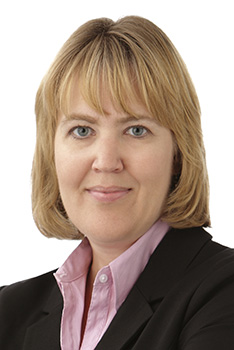
Jodi Arndt Labs, Conway, Olejniczak& Jerry S.C., Green Bay: Expect a lot of narrowing or eliminating of certain environmental laws currently enforced by the EPA. There may be significant amendments to the Clean Water Act, the Clean Air Act, and measures the Obama administration put in place to combat climate change.
“The more likely scenario,” she says, “is the roll-back and elimination of regulations and less enforcement.”
As of early 2017, Labs sees much uncertainty as to which laws the Trump administration will target first. But, in time, we may expect significant amendments to such major laws as the Clean Water Act, the Clean Air Act, and measures the Obama administration put in place to combat climate change.
Environmental lawyers are “going to be busy trying to keep up with those changes,” Labs says. “I also expect we’ll see more litigation against the EPA itself for failure to perform its duties.”
Construction Law
Expect a growing emphasis on sustainable retrofit for existing buildings to enable them to compete against new construction having built-in sustainability features, says Kim Hurtado of Hurtado Zimmerman SC in Wauwatosa.
“Sustainability analysis now is robust enough to show it pays real dividends in the operation of buildings,” Hurtado says. “Lawyers will have to write contracts that get to those savings. That’s one big area I see coming up hot and fast.”
Another challenge for construction lawyers comes with the increased use of prefabricated and three-D-printed building components to replace wood, drywall, and other traditional materials that are in short supply.
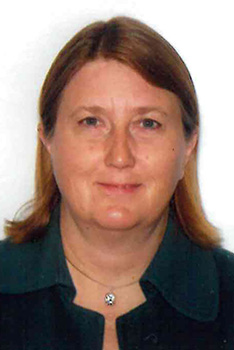
Kim Hurtado, Hurtado Zimmerman SC, Wauwatosa: Construction lawyers can expect a growing emphasis on sustainable retrofit for existing buildings, requiring contracts that get to the cost savings revealed through sustainability analysis. The increased use of prefabricated and three-D-printed building components, as well as a boom in new commercial building projects, will keep lawyers busy in 2017 and beyond.
“Cost is driving these changes,” Hurtado says, “but the law can’t keep up fast enough. Not only do we have no case law on this, but also no statutes, no codes.” Thus, lawyers will have to know how to write contracts to protect clients who use these alternative building components.
Also under way is a boom in new commercial building projects, coming in the wake of a slowdown post-9/11 and during the recession. Because of this slowdown, construction companies now lack middle managers with experience in handling large projects.
“That’s a recipe ripe for conflict and dispute, which can bring projects to a halt,” Hurtado explains. “But that can be avoided if lawyers are proactive in helping their clients get through the hurdles during the course of construction.”
Labor and Employment Law
According to Denney’s report, wage-and-hour issues will heat up in 2017, as they will in Wisconsin, says Yingtao Ho of Previant Law Firm in Milwaukee. “We are already seeing a lot of activity,” he says, “and I expect it to increase going forward.”
The legislature made changes to the state’s prevailing wage laws in the 2015 budget bill. Such laws set minimum pay requirements for construction workers on public projects. As of Jan. 1, 2017, the prevailing wage law for local governmental units is no longer in effect.
“But contractors (on local projects) may not understand that the law goes away only for new contracts formed in 2017,” Ho says. “We may see violations early in the year, especially among smaller contractors, for projects still covered by the law.”
Prevailing wage laws continue to apply to state agency and state highway projects. But the state’s Department of Workforce Development no longer will be the enforcing agency. Enforcement duties now fall to the Department of Administration and the Department of Transportation, neither of which has enforcement experience in this area, Ho points out.
The upshot is that “in the long term, many workers will be less protected,” Ho says. “They won’t have prevailing wage laws and the Department of Workforce Development to protect them.”

Yingtao Ho, Previant Law Firm, Milwaukee: Lawyers are already seeing a lot of activity related to wage-and-hour issues and can expect that to increase going forward. In the long term, many workers won’t have prevailing wage laws and the Department of Workforce Development to protect them.
Food and Beverage Law
Food and beverage attorneys serve clients that produce, distribute, or sell food and beverages and related products. This industry is a major force in Wisconsin’s economy, and its participants need legal advice to stay in compliance with regulations.
A couple of major issues will keep food and beverage lawyers busy in 2017, says Jessica Hutson Polakowski of Reinhart Boerner Van Deuren S.C. in Madison. The first is the Food Safety Modernization Act, which was passed in 2011 and has been implemented in stages. Full implementation should occur in 2017.
For lawyers, that means “we will be working with our clients,” Polakowski says, “to make sure they have their GMPs (good manufacturing practices) in place, and that they are ready should the FDA (Food and Drug Administration) show up at their door. There will be fire drills, in which the FDA comes in unannounced. It’s our job to make sure our clients are as prepared as they can be.”
Nutritional labeling is another issue requiring legal guidance, as is labeling in general. For instance, labels must clearly state whether products are free of dairy, gluten, or allergens. “Labeling isn’t a new issue,” Polakowski says, “but it continues to be very important. It can be a quagmire for the industry in terms of consumer litigation.”
Trends in Marketing and Business Development
Gamification
As law firms seek new ways to motivate lawyers to become better rainmakers, gamification is on the rise, Denney says. Echoing that observation is Jill Weber, president of the Legal Marketing Association and chief marketing and business development officer at Stinson Leonard Street LLP.
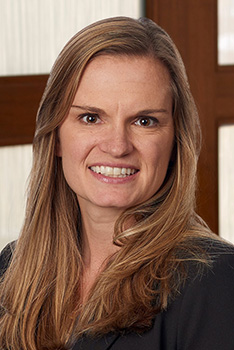
Jessica Hutson Polakowski, Reinhart Boerner Van Deuren S.C., Madison: A couple of major issues will keep food and beverage lawyers busy in 2017: the full implementation of the Food Safety Modernization Act; and nutritional labeling, which can be a quagmire for the industry in terms of consumer litigation.
Gamification uses a technology tool or event to encourage lawyers to accomplish certain marketing and business development tasks, such as client visits or other activities. Rather than simply working off a written to-do list, “the technology tool prompts them and gives them a dashboard to see how many tasks they have completed,” Weber explains.
Another form of gamification involves what Weber calls a “clear event.” For instance, her firm does marketing blitz events, at which lawyers can rotate through different stations that offer specific advice, such as updating their biography or client contact list. The whole event takes just one hour of an attorney’s time. “At the end of it,” Weber reports, “we have an aggregate of all the things that got accomplished as a team.”
Client Feedback
This is an area that continues to receive much talk and too little action, Denney’s report states. Weber agrees and notes that the Legal Marketing Association lists client feedback as one of its key issues to pursue.
“A primary focus for us,” she says, “is bringing the voice of the client not only to our members, but also to the law firms we serve. It’s important to be client-centric” to succeed in today’s legal marketplace.
Social Media
Weber concurs with Denney’s observation that social media continues to be an effective way for individual attorneys to build their reputations, but less so for law firms. In Weber’s experience, social media doesn’t work well to extol a firm’s general areas of legal expertise.
Individual attorneys, on the other hand, can build a brand for themselves in industry niches. “Leveraging social media – through a blog, Twitter, LinkedIn, and so on – is a great way for an attorney to gain visibility with his or her target market.”
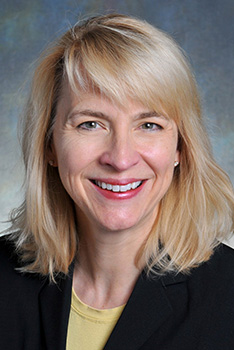
Jill Weber, Stinson Leonard Street LLP, St. Louis, Mo.: For marketing and business development, expect a rise in gamification tools to accomplish tasks, more efforts to garner client feedback, individual lawyers’ use of social media to build a brand in industry niches, and collaboration between firms’ marketing-business development and other administrative functions.
Collaboration
Weber sees increasing crossover between law firms’ marketing-business development departments and other functions within the firm. For instance, as Denney notes, more firms are using project management to better meet client expectations. At the same time, Weber sees more collaboration between pricing and project management and marketing-business development.
“Overall, the trend we’re seeing is that marketing-business development is not operating in a silo,” Weber says, “but is collaborating with other administrative functions.”
Other Trends and Issues
Oversupply of Lawyers
The job market remains tough for law school graduates, “even for those in the top 25 percent of their class,” says Jacquie Champagne of the Milwaukee-based Champagne Group, an executive search firm serving the legal services industry.
Client pricing pressures keep intensifying, and firms increasingly turn to technology solutions to perform many tasks – research, contract review, compliance checks, and other functions – more efficiently and cost effectively. That means fewer job openings for young associates. Such changes mark “an irreversible structural change, not just a trend” in the delivery of legal services, Champagne observes.
An oversupply of lawyers raises other sensitive issues, as well, Denney points out. If a firm already has too many attorneys, what does it do? Have fewer equity partners? Reduce partner compensation? Release some existing partners?
“I think this is going to be both an emotionally and professionally challenging issue for firms in the coming year,” Denney says. “There is no happy answer.”
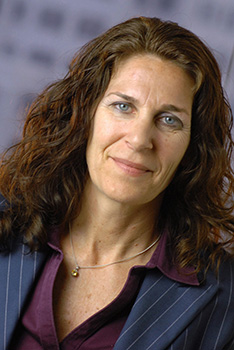
Jacquie Champagne, Champagne Group, Milwaukee: Client pricing pressures keep intensifying, and firms increasingly turn to technology solutions to perform many tasks, resulting in fewer job openings for young associates. These and related issues mark an irreversible structural change, not just a trend, in the delivery of legal services.
Mergers, Lateral Hiring, and Lateral Integration
Mergers and lateral acquisitions continue at a rapid pace among law firms across the country. “The trend has been going on for a few years, and it doesn’t seem likely to stop,” Champagne says. “But I’m not sure people understand that it’s a survival move, not a strength move. … Firms are combining rather than exploring other areas of innovation” that could help them to thrive.
All too often, Denney’s report says, lateral hiring fails to meet one of its primary goals: increased firm revenues and profits. One major shortcoming is that lateral hires are not effectively integrated into their new firm.
Champagne sees the same phenomenon unfolding. Mergers and lateral hiring raise new complications for the firms involved: cultural issues, technology issues, people issues, and systems issues related not only to technology, but also processes and procedures.
Still, Champagne notes that formal programs to integrate lateral partners are seriously lacking. “Someone who comes in with a book of business,” she says, “can just as easily leave with a book of business in a couple of years. There’s a lack of loyalty.”
Changes in Law Firm Management Structures
Denney reports that a growing number of large and mid-size firms are “realizing they need nonlawyers with special expertise to manage the firm” in such areas as technology, marketing, project management, and overall business operations.
Echoing that observation is John Remsen of the Atlanta-based Remsen Group, a consultancy that guides firms in implementing their strategic initiatives. He paints a picture of the challenges facing the legal profession: lawyer oversupply, increasing use of technology, more demanding clients, growing competition, and other factors.
“All this calls for a law firm to be run more like a business,” Remsen concludes, “and less like a loose confederation of sole practitioners who share office space.”
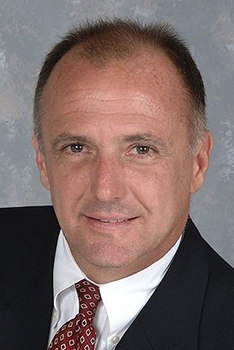
John Remsen, TheRemsenGroup, Atlanta, Ga.: Challenges facing the legal profession – lawyer oversupply, increasing use of technology, more demanding clients, growing competition, and other factors – all call for law firms to be run more like a business and less like a loose confederation of sole practitioners who share office space. That requires firms to strategically plan where they want to go and how to get there.
Out in the field, he runs into such situations often, in which individual lawyers in a firm go their own way in how they track their time, how they bill clients, whether they show up at partner meetings, and so on. “I hear, ‘The best thing about my firm is that there are no rules,’” Remsen reports. “That happens to be one of the worst things. It’s horribly inefficient.”
So what exactly does it mean to operate more like a business? It begins, Remsen explains, with strategic planning. Pinpoint where you want your firm to go and how you will get there. And be sure everyone is on the same page.
In devising a plan, “I encourage firms to keep it simple,” Remsen says. “What do you see for your firm in the next five years? Where do you want to be in terms of your practice mix and your client mix? Are there areas you want to grow or shrink or get out of altogether? What will be your geographic footprint?”
In looking to the future, firms usually have an “urge to merge and need to grow,” Remsen says. “But growing for the sake of growth is not sound strategy. It should be client-driven, and it should be strategic.”
Leadership versus Management
Traditionally, sound business management is not a concept that shows up on lawyers’ radar. But while they’re striving to get their heads around the idea of better management, “now they have to take it to another level,” Denney says, “and realize that the real issue is leadership. I think few firms understand that.”
Often firms look to those with seniority or big books of business to act as firm leaders, typically in a managing partner role. But those individuals may not be the best leaders, Remsen says, because leadership requires a special set of skills.
Dianne Molvig is a frequent contributor to area and national publications.
A leader has to be a visionary, a strong communicator, and someone who has a positive outlook. While lawyers often tend to be skeptical and focus on what’s wrong in a situation, Remsen points out, “a leader is positive and sees the glass as half-full rather than half-empty.”
Moreover, a leader must want to assume the leadership role for the right reasons, Remsen adds. “It’s not a power play, a money play, or an ego play,” he says. “A leader has to put the long-term best interests of the firm first – and be genuine about that. A good leader has to have credibility so people are willing to follow.”
